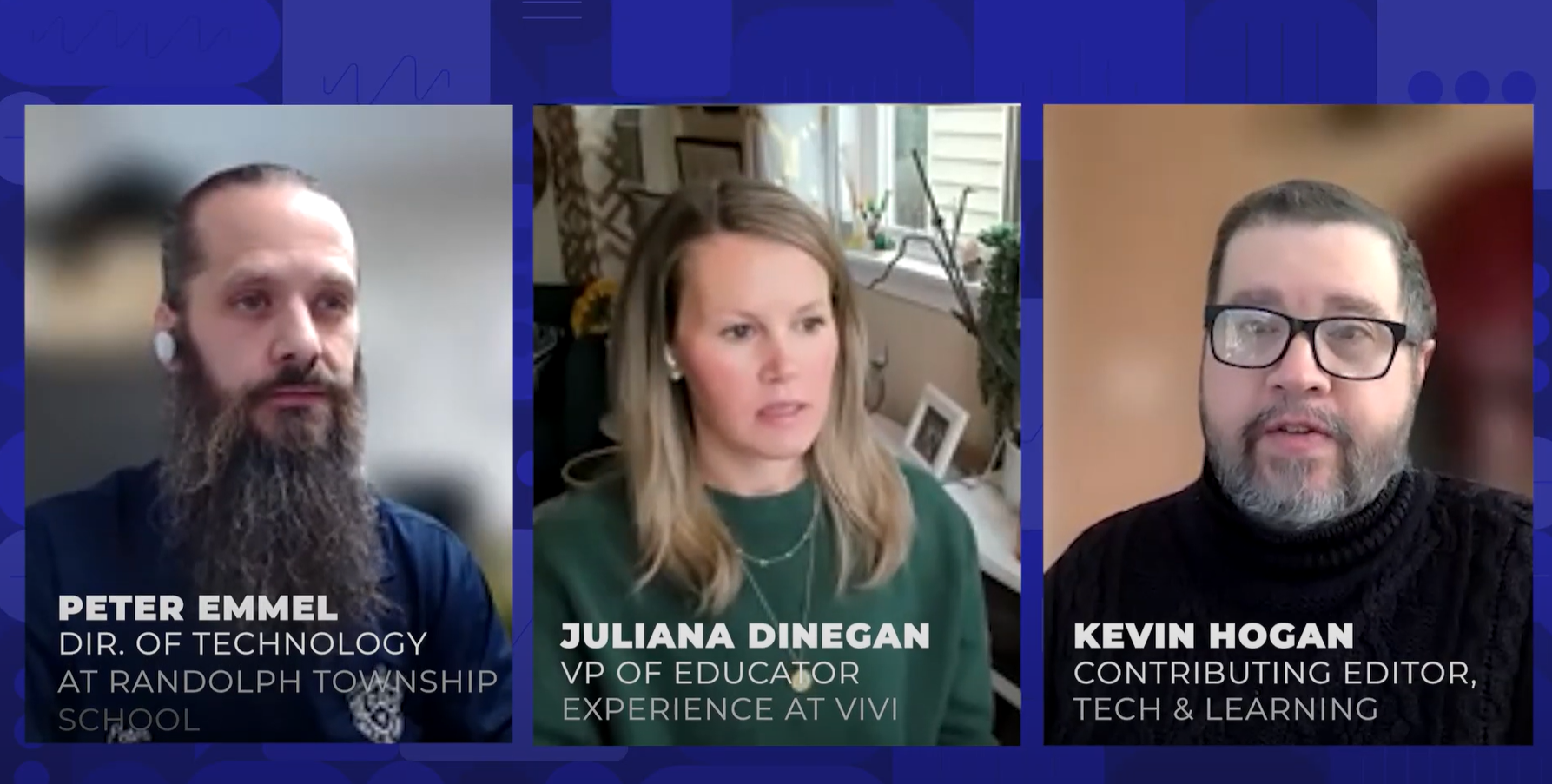21st Century Student Handbook: Teaching Today’s Web-Centric Kids

Lots of schools are talking about the importance of preparing their students for an increasingly inter-connected, Web-centric world. Here are some districts that are “doing” it. Some of their advice may be able to help the reader avoid mistakes, etc.
Creating ePortfolios
Increasingly, job recruiters are not satisfied with paper portfolios: They want to know what prospective employees have achieved online. This is resulting in the creation of e-Portfolios—online repositories of a student’s work through his or her academic career. Compiling them does not have to be a chore: As a student completes and files assignments in digital form, they are saved to an online repository for ongoing access.
The best e-Portfolios are those that contain a wealth of materials compiled over time. Mindful of this, Scarsdale Middle School in Scarsdale, NY, is teaching its seventh graders the process of creating an e-Portfolio to highlight their ongoing work and assessment in social studies class.
“These portfolios represent purposeful collections of student work that serve as evidence for their individual abilities,” says Ken Holvig, the school’s Head Computer teacher. “The steps for creating the portfolio include collection of work samples, selection through teacher and student input, reflection, projection of future goals and presentation to parents and peers.” The e-Portfolios are shared online through Google Sites.
“Our seventh graders have responded to the challenge by building robust documents rich with chosen artifacts and personal reflection,” Holvig notes. In other words, the process of creating e-Portfolios of their own work is motivating students to create better work; thus improving their education and their job-hunting resources down the line.
Developing Internet Literacy
Tools and ideas to transform education. Sign up below.
Tomorrow’s adults will live much of their lives in cyberspace; not just socially, but to do their jobs and manage their personal financial resources. Doing this successfully requires ‘Internet Literacy’: the ability to ‘read’ a Web site’s text, imagery, and multimedia in an intellectually critical manner.
Susan Luft is a first grade teacher at Fox Meadow Elementary School in Scarsdale, NY. She has her students take part in “Internet Workshops” where they learn Internet literacy skills by analyzing a specific Web site and discussing their results.
“One such learning experience that I used with my first graders included the district social studies inquiry studies with family holidays, and the cultural universals that exist across societies,” Luft says. In the exercise, the students read about Christmas, Chanukkah, and Kwanza through the Web site http://teacher.scholastic.com/activities/holidays. Students were then asked to complete a chart that included writing or sketching four facts about each of the three holidays.
Scarsdale Middle School in Scarsdale, NY is teaching its seventh graders the process of creating e-Portfolios. Thanks to the Internet Workshops, “students begin building essential online reading skills that becomes part of their repertoire in and out of school,” says Luft. “Further, the work permits students to learn from one another about content information, critical literacy skills, and the new literacies of Internet technologies.”
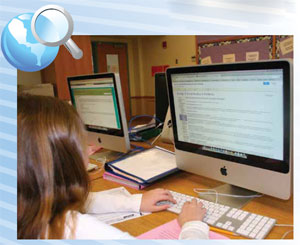
Chats and Tweets as Teaching Tools
Instructing students to watch the “State of the Union” speech and learn from the experience is nothing new. But employing the Web to make it into an interactive group exercise is new and different; especially when Twitter is a central teaching tool.
Such was the inspiration of Diana Laufenberg, who teaches 11th and 12th grade students at the Science Leadership Academy in Philadelphia and presented a showcase of 21st century student projects at the recent New York Tech Forum. When President Obama delivered the State of the Union speech on January 24, 2012, Laufenberg’s students shared their views with her and each other via Twitter and the Moodle chat site.
“During the speech, my students generated 462 tweets and 36 pages of Moodle chat,” Laufenberg reports. “Most importantly, they were able to ask questions and make comments about the speech’s content quickly and easily. This resulted in the students getting a real grasp not only of what was being presented, but also the historical and political context of what the President was saying. In other words, they didn’t just sit through the State of the Union passively: They heard it actively and critically.”
Make it Personal: Passion- Driven Learning
Active participation is a hallmark of 21st century learning, and nothing drives such participation better than passion. This lesson has not been lost on Humberto A. Pérez, an instructor in the Connally High School Video Technology Department in Austin, TX, and recent presenter at the Texas Tech Forum conference. When he introduces students to the tools of techniques of video production, Pérez immediately engages them by assigning a project near-and-dear to every teen’s heart: namely producing a short video about themselves called ‘Who Are You?’
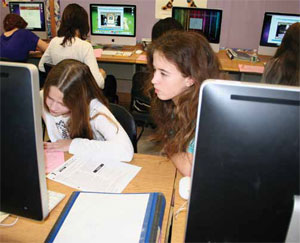
“My goal is to find out what the students are passionate about, and to help them connect that passion to video production,” Pérez explains. “They don’t just get on camera and talk aimlessly. Instead, I have them script up questions, which they then have to answer on camera. After editing, the subsequent video reflects who they are – and shows them how effective this art form is for communicating ideas and feelings.”
The passion generated is subsequently built upon by Pérez. He teaches the students how to write short films scripts. They then choose the best one for production—for grading—and form up into a complete film shoot with cast and crew for the duration of the term. Perez has recently launched a related non-profit for student films called the Cinema Du Cannes Project.
A sample e-Portfolio from Scarsdale Middle School.Online Collaboration on the Cheap
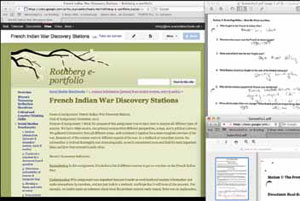
The Web’s ability to link people in different locations in real-time, along with the financial costs and security concerns of business travel make online collaboration a necessary business and intellectual skill.
At the Greenacres Elementary School in Scarsdale, NY, fourth grade teacher Shoshana Cooper and technology facilitator William Yang are using Google Docs and a free educational social networking site called Edmodo to teach online collaboration.
Below is a scene from one of the student-made films from the Cinema Du Cannes Project.
See more at http://vimeo.com/cinemaducannesproject Specifically, “students worked individually, in pairs, and as a whole group to compile a brochure created by groups studying a specific environmental issue,” says Yang. Edmodo was used to allow the students to discuss their views during this process. Then, after viewing online videos to learn about persuasive-style writing, the students wrote scripts using Google Docs and then shot PSA s, which were posted on Edmodo. The project taught them to collaborate online; an approach that Yang describes as being “extremely engaging and motivating for students.”
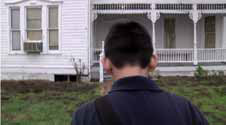
“Everyone learns more when they are actively participating rather than passively sitting and listening to a teacher lecture,” William Yang adds. “The use of social media encourages more active participation; both in and outside the classroom.”
